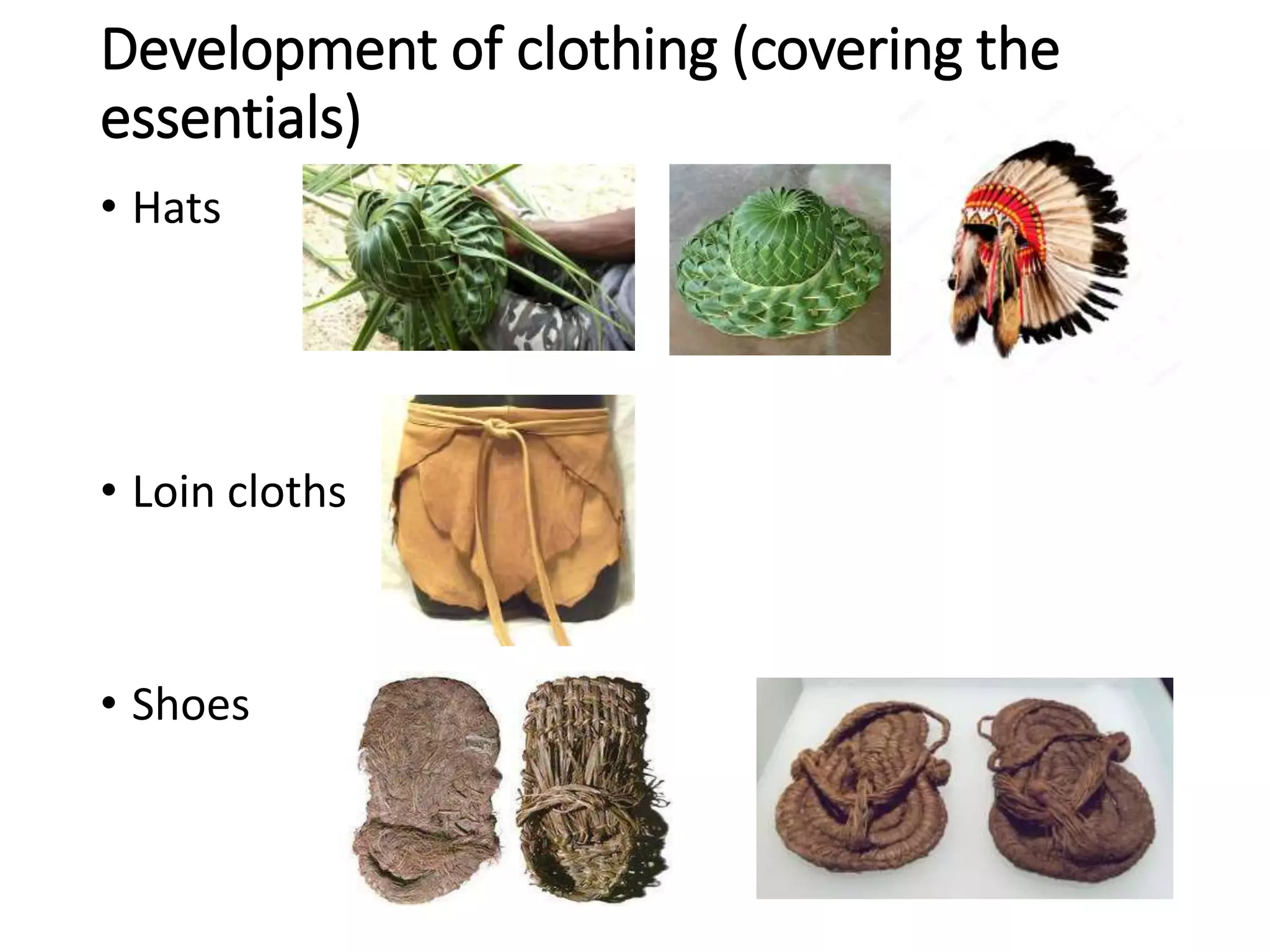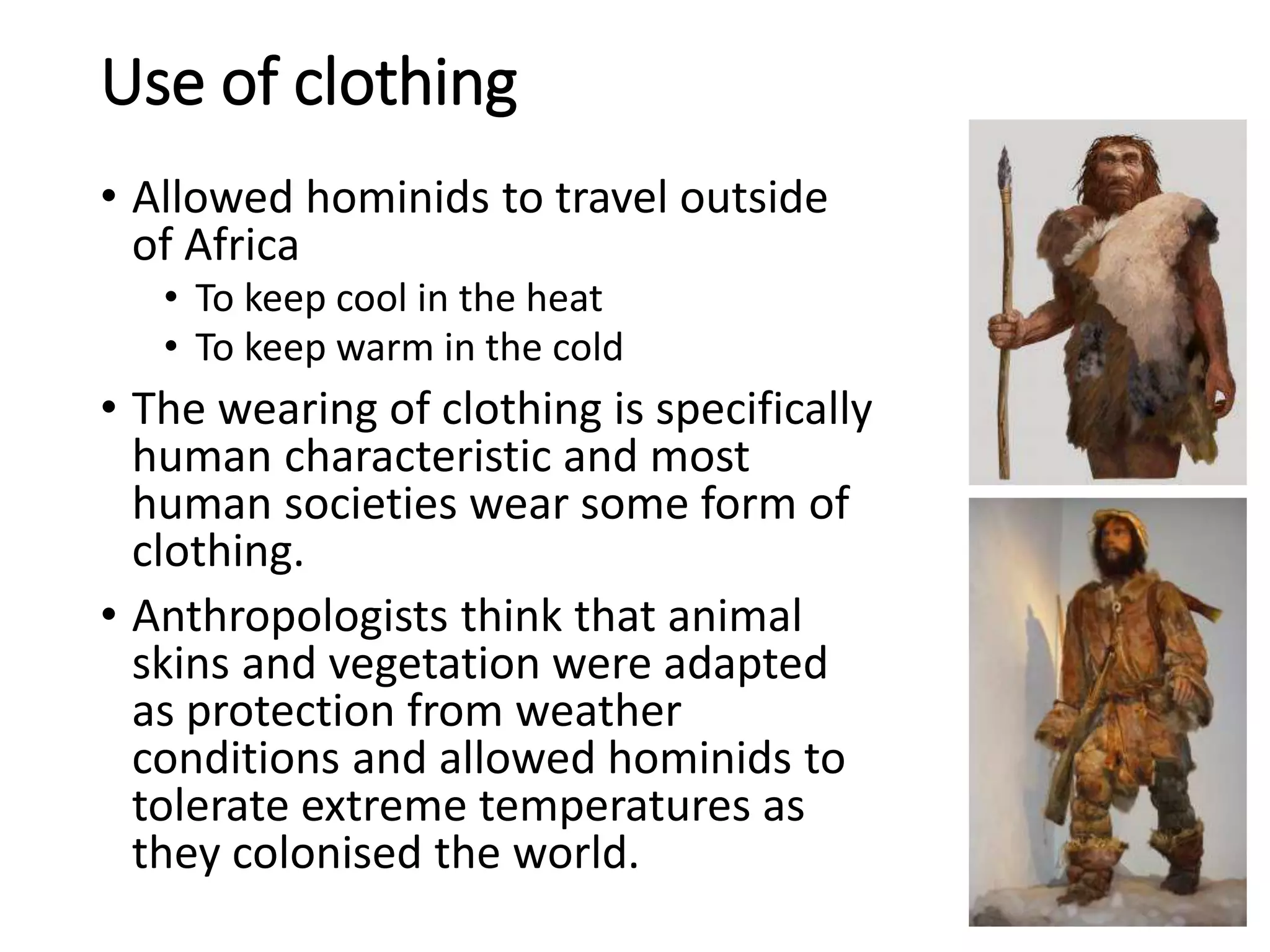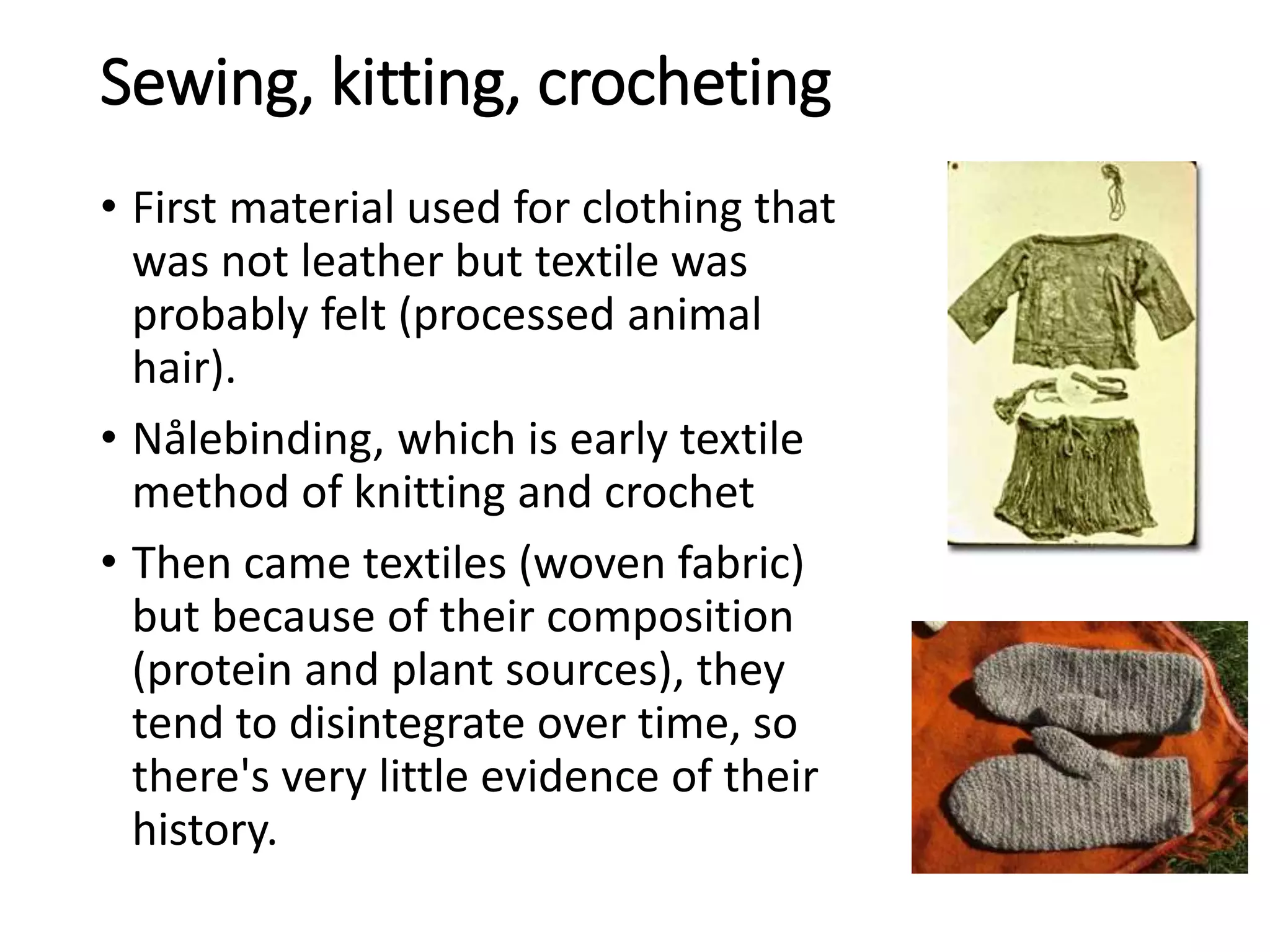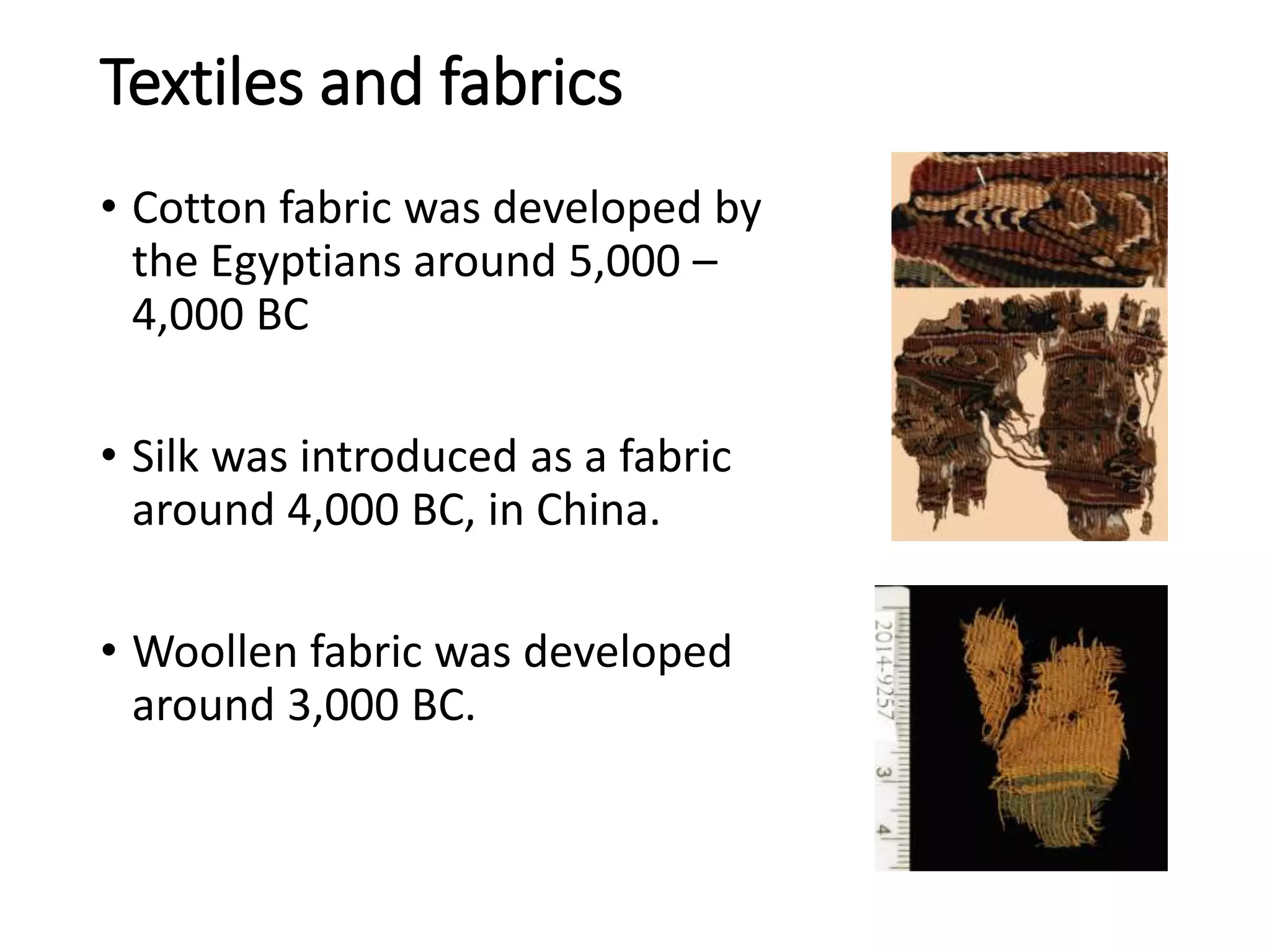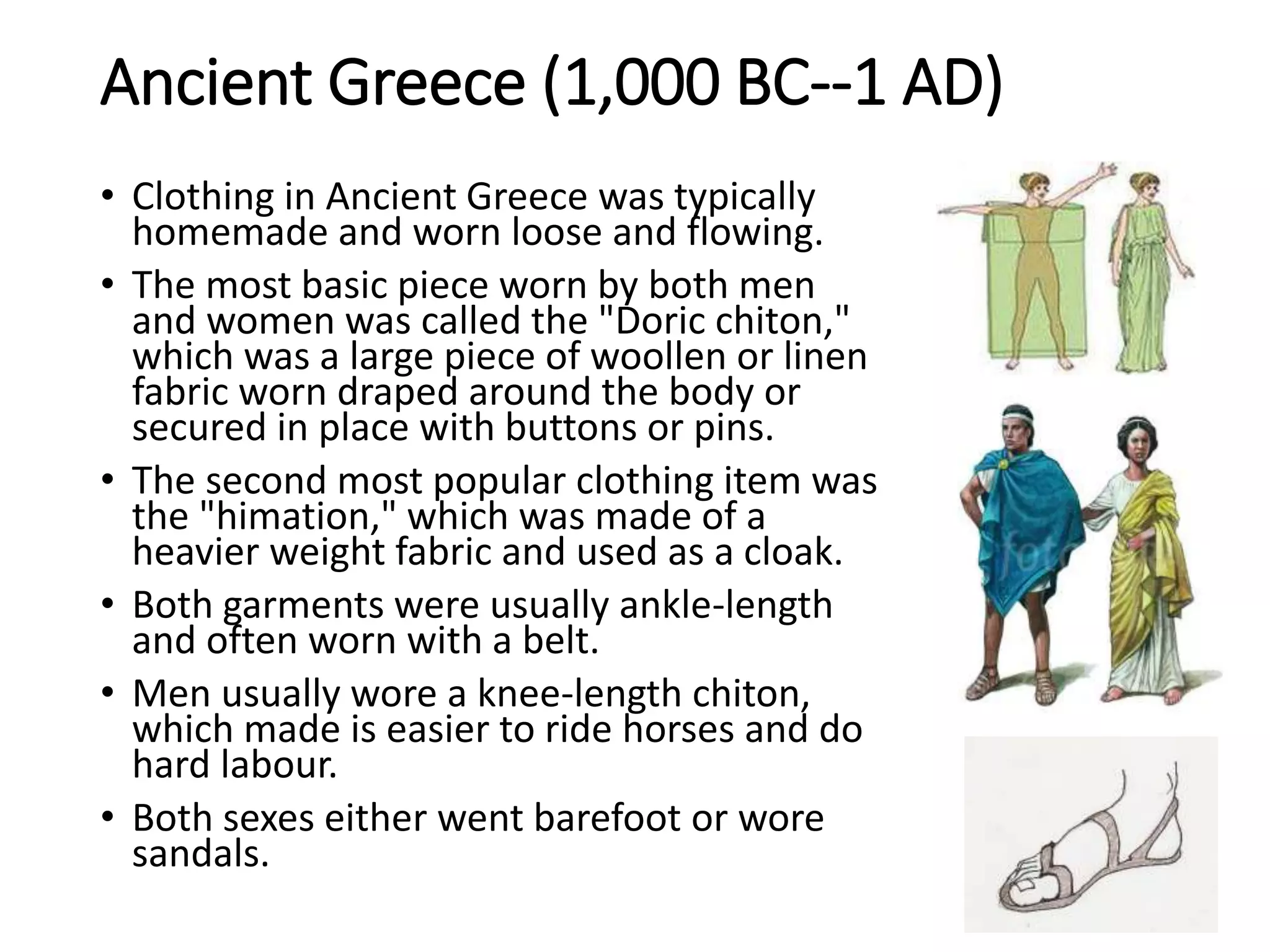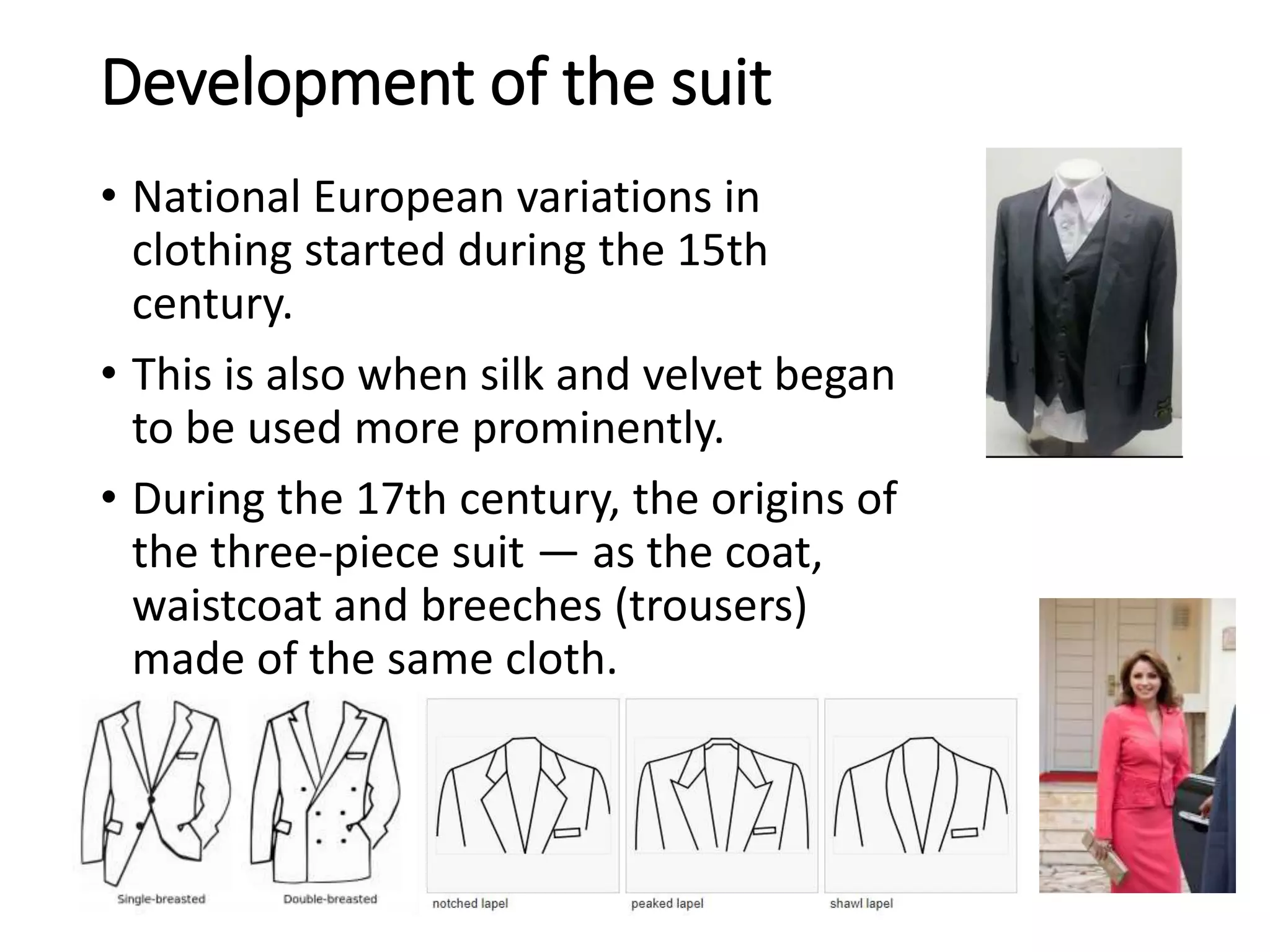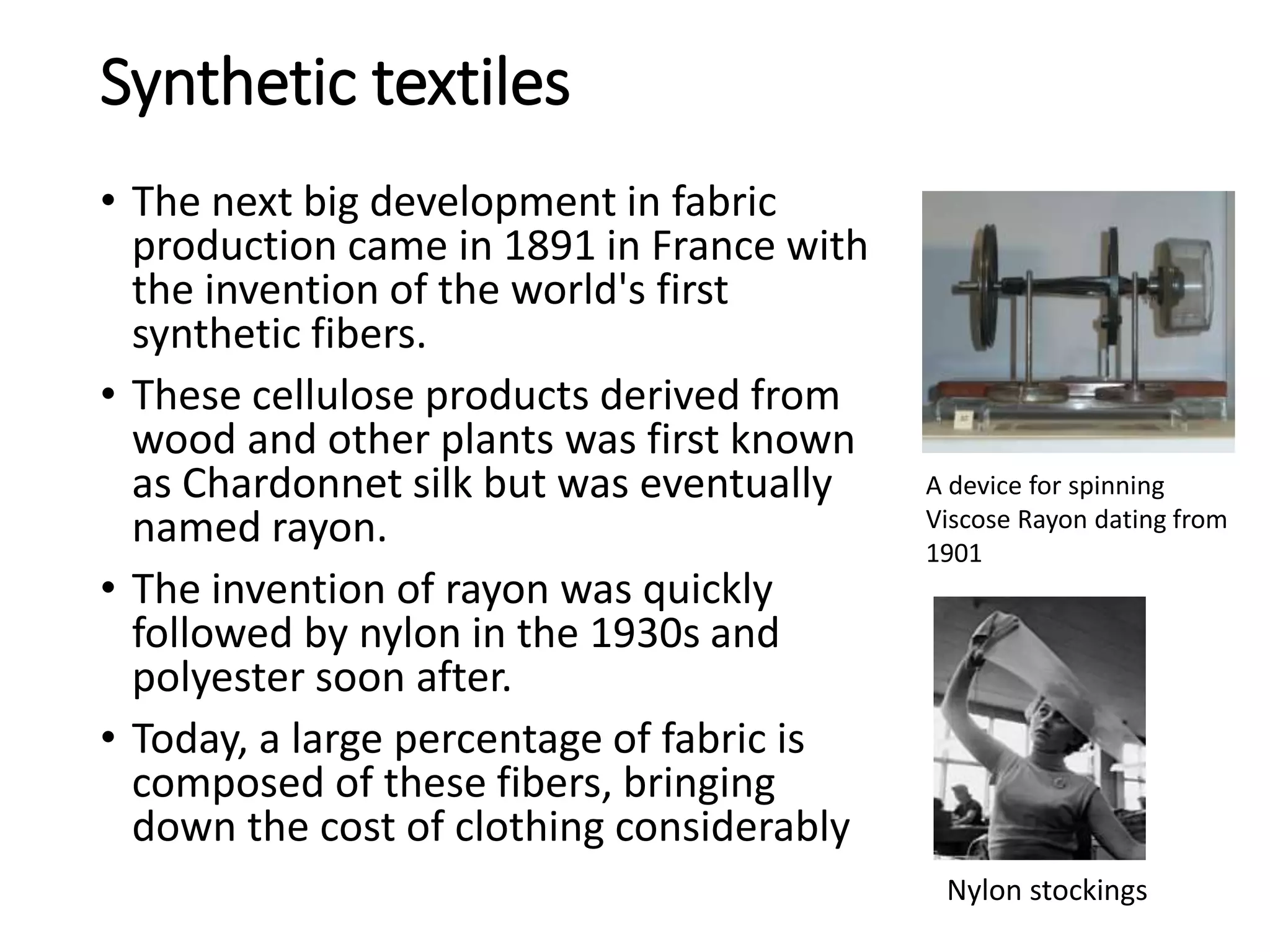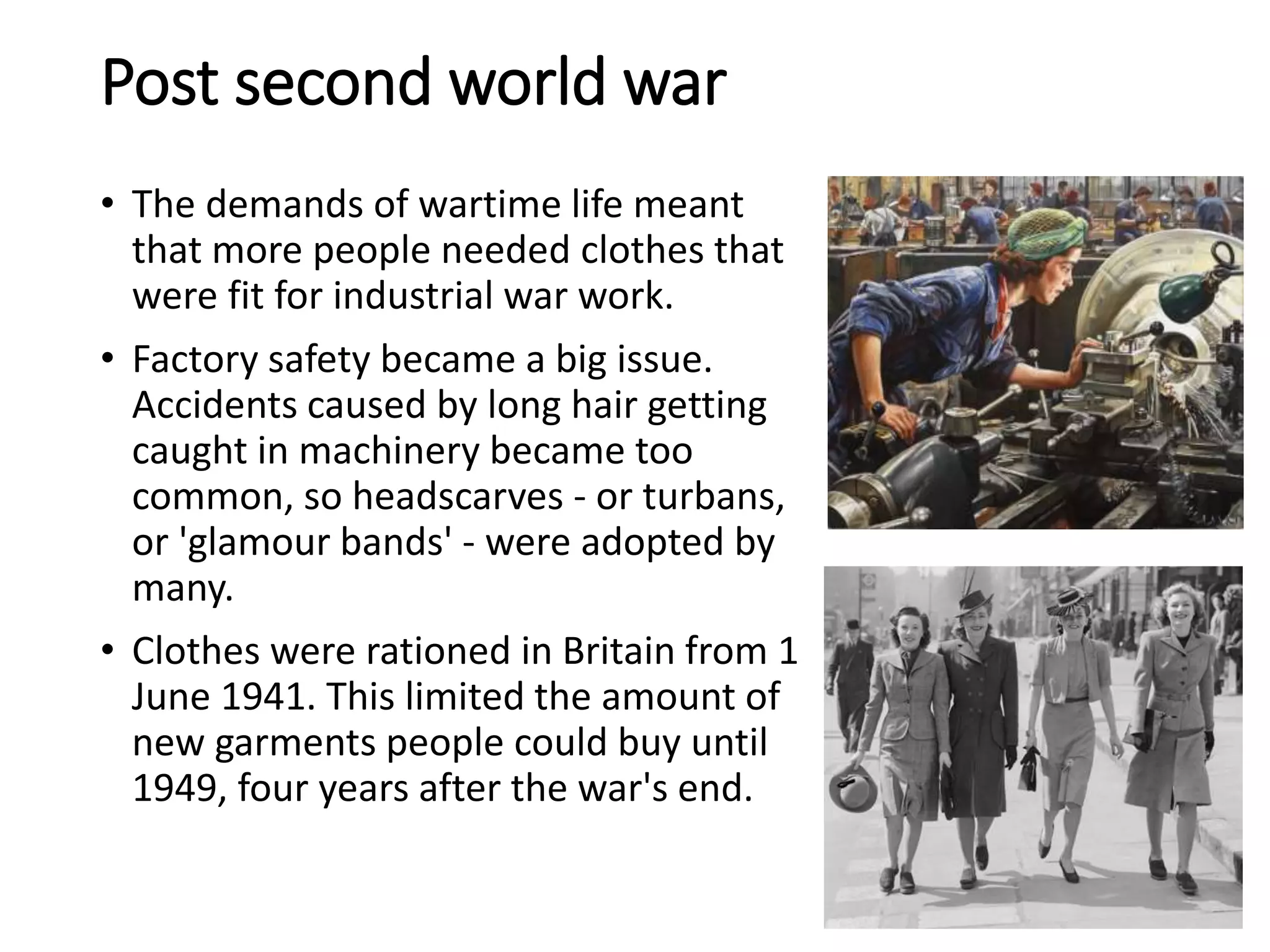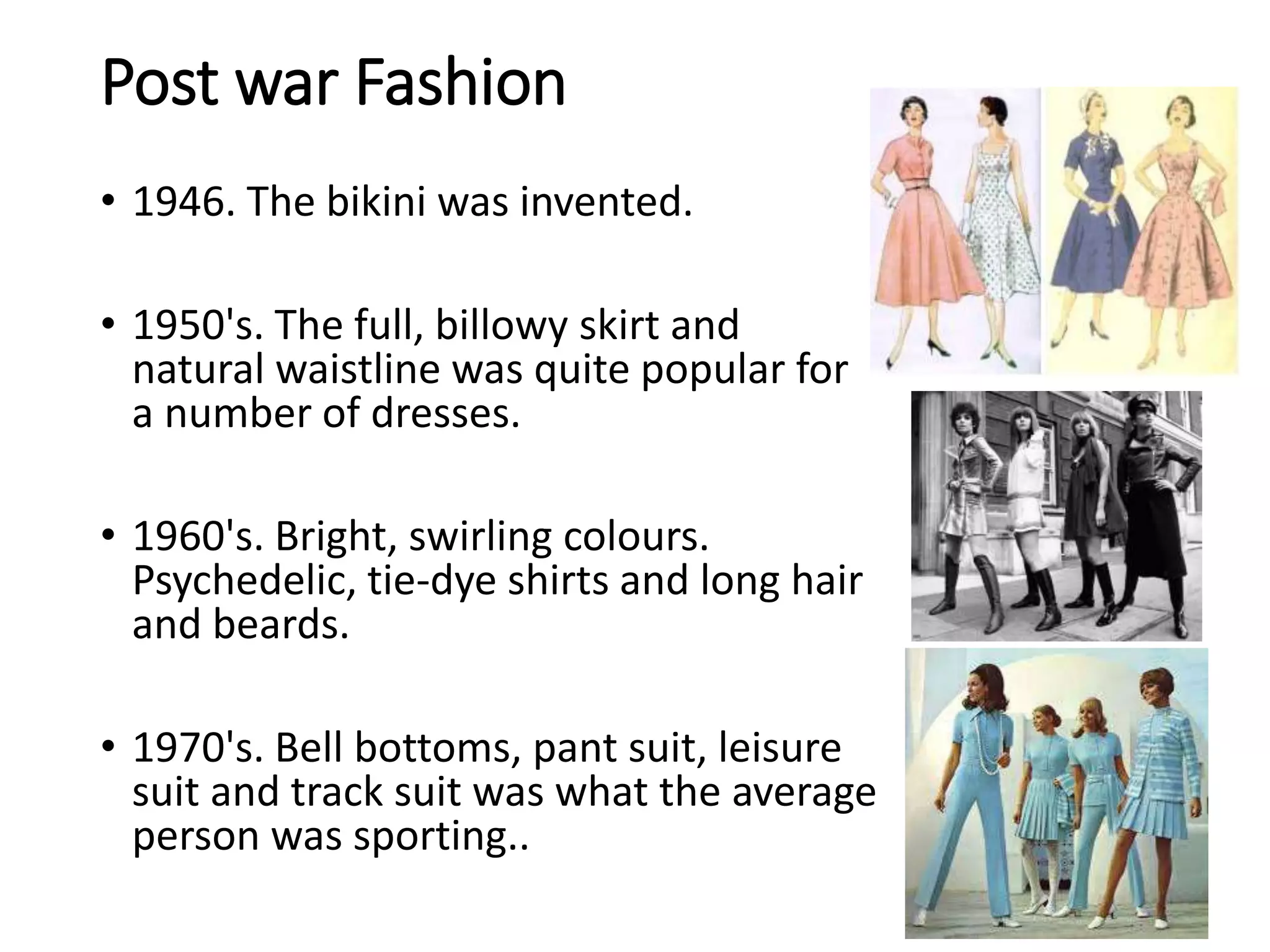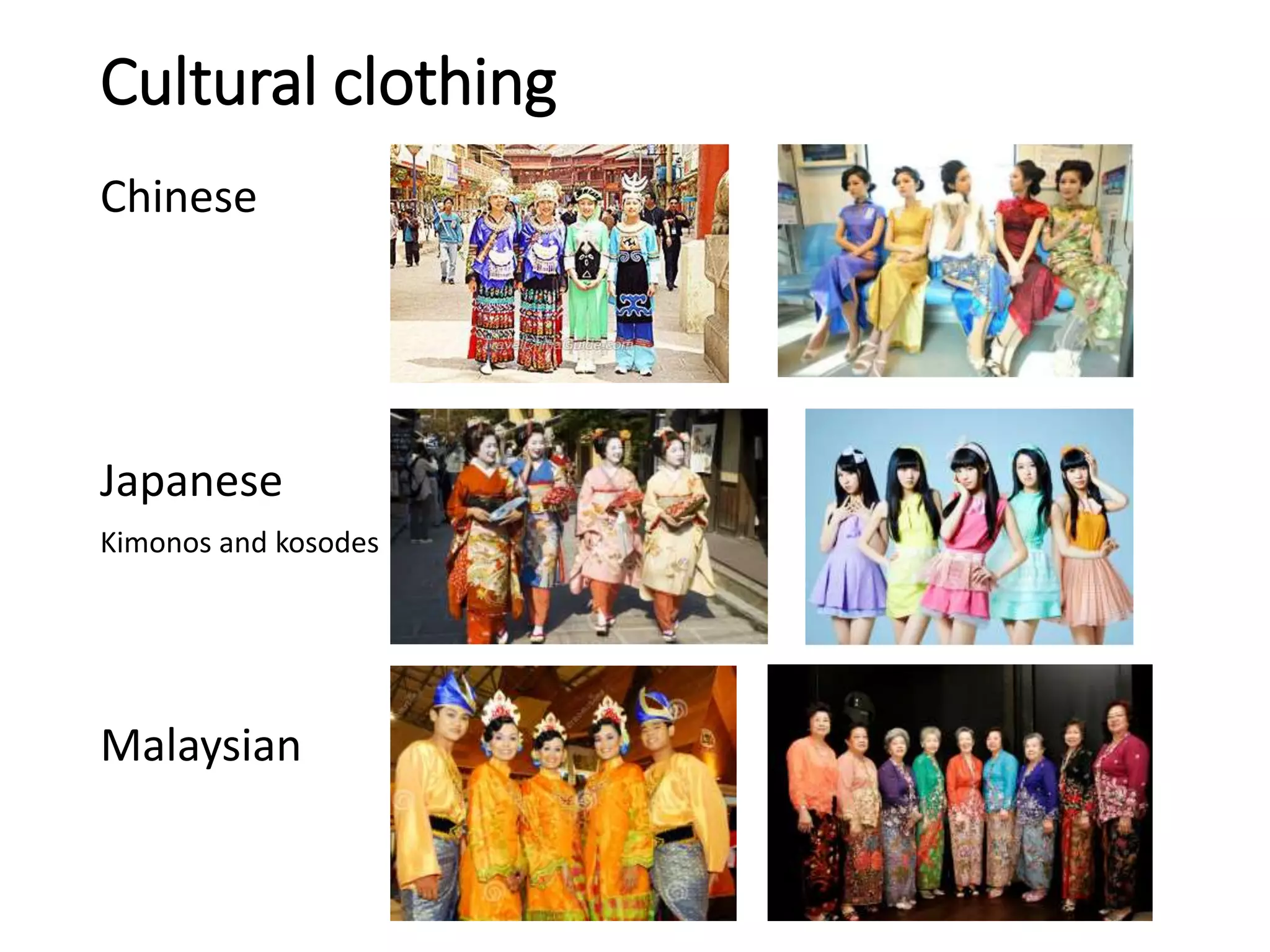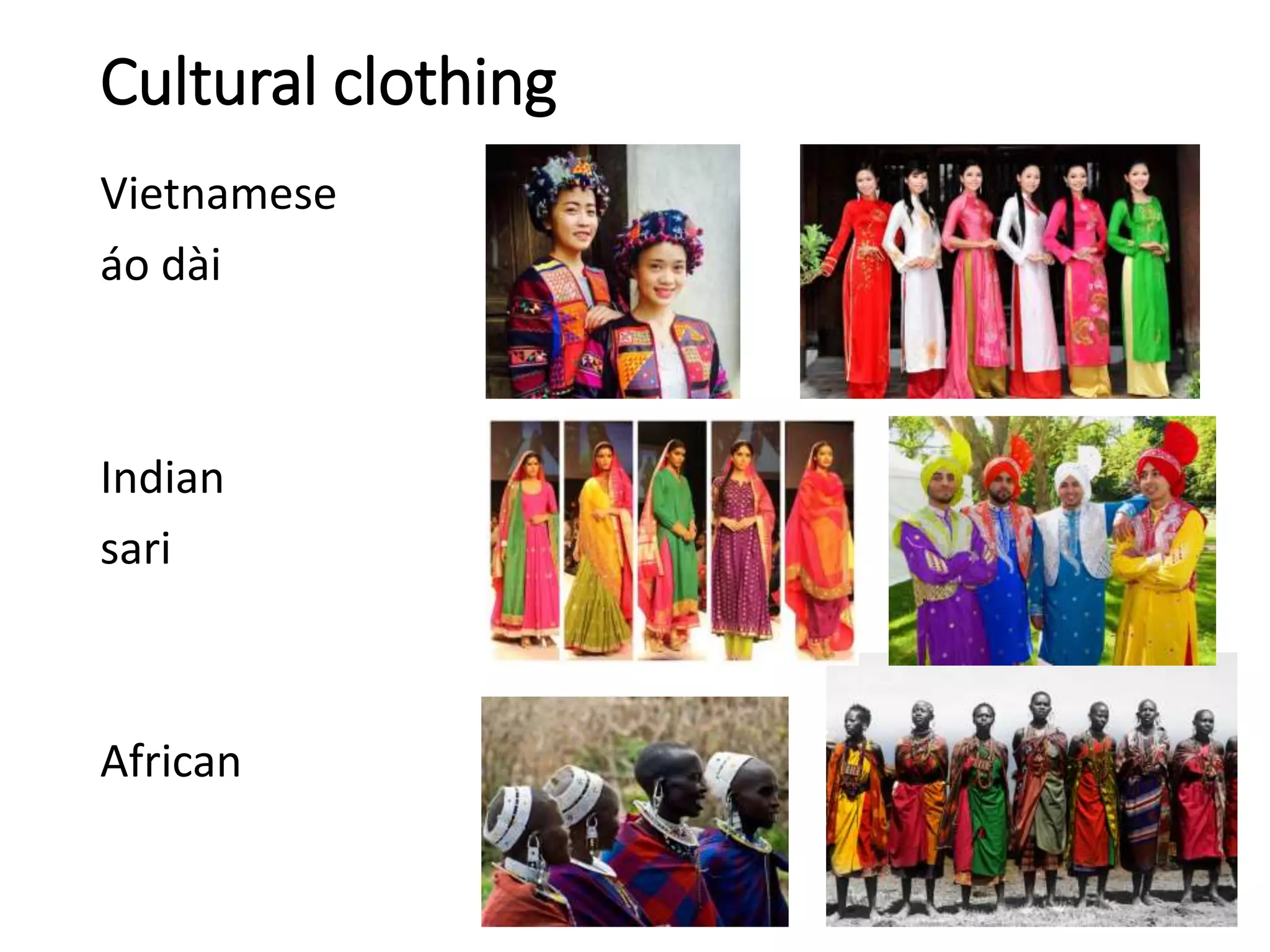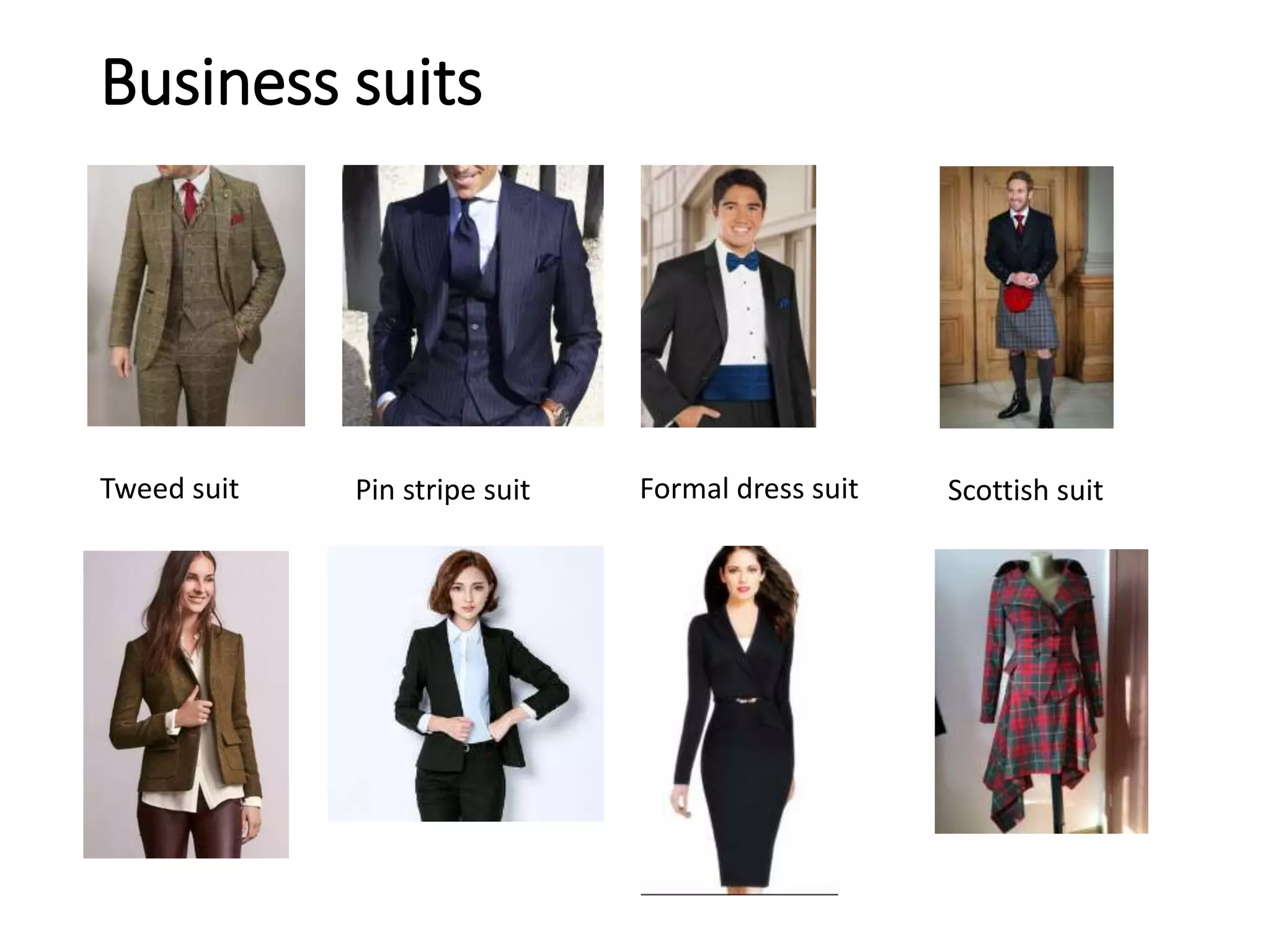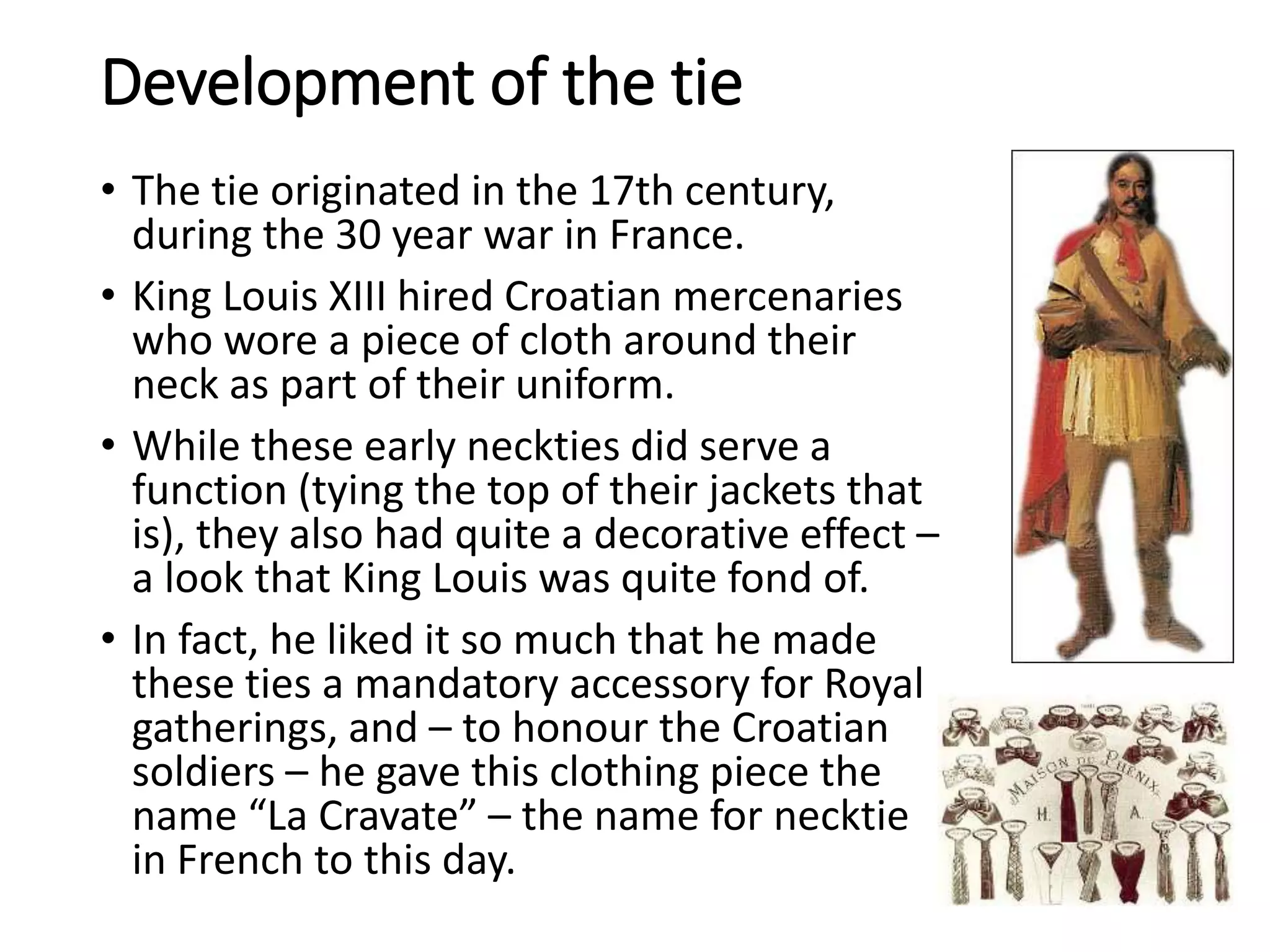The summary provides an overview of the evolution of clothing from animal skins to modern fabrics and fashion:
- Early humans began wearing animal skins and plant fibers as clothing around 100,000 years ago for protection from weather. Sewing needles dated to around 18,000 BC showed skins were sewn together.
- The first woven fabrics emerged in the Middle East around 8,000 BC using plant fibers like flax and hemp. Silk production began in China around 2,800 BC and spread along trade routes.
- During the Industrial Revolution in the 18th century, powered machines enabled mass production of cotton and wool textiles. Synthetic fabrics like rayon, nylon and polyester were later invented.

